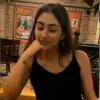It all started with the signboard - ‘Matrix Square Mall.’ Show that to a math major, and they will take you to the 'land of matrices.' No, not the trilogy ‘Matrix’ but the rows and columns of a matrix.
For the uninitiated, a square matrix consists of an equal rows and columns, e.g, 3x3, 4x4, 5x5, nxn, etc.. So, am I talking about square matrices? There are some square matrices where if we flip or swap the rows and columns, we get the ‘transpose’ of that matrix. Common parlance for transpose is inverse or reverse. That means the rows of the original matrix are turned into a column in the transpose of that matrix. For example, think of how we flipped the sheep and the wolves in our BALH 2 ‘Bhed and Bhediya’ story.
What is the significance of knowing all this? Well, here comes the fun. When we merge or multiply a square matrix and its transpose, we get the ‘Identity matrix.’ This multiplication is commutative, so we can multiply the transpose and its matrix and still will get the identity matrix. So you might ask what is an Identity matrix. An Identity matrix in linear algebra consists of only the number ‘1’ in the diagonal of that matrix. In other words, when we multiply a square matrix with its transpose, we get the number ‘one.’ This is what we called ‘Merge Emerge’ in our story.
Fascinating. Isn’t it?
We have Bhed – Bhediya story: the ‘original’ story started with wolves usurping VK’s land from the sheep. In the the current situation, we have the wolves ‘flipped’ to sheep, and the sheep are now wolves to take revenge for the injustice they suffered fifteen years ago.
We have the ‘flipped’ The Ramayan story: At present, we are experiencing the flipped Ramayan where Ram was in exile at KM for fourteen years until Priya joined him last year. The golden deer was Vedika because of whom Ram was not able to meet Pri earlier. That illusion of golden deer broke in the office as we witnessed. We have seen Ram – Pri’s coronation happen with ‘Ram aur Priya ki Kahani’ with Ram's ‘dhanush or bow’ broken by Ram. As is written in the epic, “when Ram breaks the bow of Shiva during the Swayamber, the sound of crack was like the clasp of a thousand thunders.” Everyone heard it. We also heard it when Nandini was meeting Meera maa at Sood house.
We also see the ‘original sequential’ The Ramayan story: This started with Ram and Priya's marriage. Shivpriya gave me the sequence, which I will write here. We are in step 4 in the regular sequence of The Ramayan.
The sequence of events in Ramayana helped by Shivpriya:
1. Birth of four brothers
2. Education
3. Swayamber
4. Ram's coronation preparations
5. Kaikeyi's boon
6. Vanvaas - first 13 years nothing happens.
7. Surpanakha (b/w 13-14th year)
8. Golden deer (")
9. Adbuction (")
10. War won with the help of vanar sena.
In all stories, we are heading towards exile. After the merging of all the stories, one story emerges which serves the ultimate prize – ‘Nectar’ as in Amrit Manthan or Samudra Manthan. The elixir for Ram.
But today, I am not writing about the original and flipped Ramayan; we need more clues to write thoroughly about it. Today, I am writing about ‘Amrit Manthan’, the last puzzle in the piece 745/13.5 = 55.185. I am going to disclose 55.185.
I think almost everyone here knows the story of Amrit Manthan. I’ll paste Shivpriya’s summary below for your reference. We know that the accident happened at Alibag. We also know that if we divide 745 divided 13.5, we get 55.185. In our BALH 2 story, 13.5 is Ishaan, the North Star, is the guide to solving the murder mystery 745.
Ishaan corner, as we know, is also Northeast (NE). Hence, it is our Polestar. Our guide to the path where the ‘nectar’ will finally be in Ram’s hands. Let’s see how we can get to the ultimate prize.
I checked the latitudes and longitudes of Alibag. But, it will be tough for me to find a location that is located precisely 55.185 degrees NE of Alibag without knowing the destination. I looked at the map and found that the close one in Nashik. So, as I always do, I dig into the episodes to see if any dialogue gives me a hint. Found one.
We now look atthe episode when Pri was kidnapped. There was a vendor who walked south from Nashik to come to Mumbai to sell ‘guavas (amrud).’ I emphasized the word ‘walked south’ and you know why? I thank Shivpriya for educating me thoroughly on the essential details of The Ramayana, today. Let’s allude to our favorite epic, again. Ram -Sita walked south from Ayodha to the Godavari where Sita spotted the ‘golden deer.’ But after defeating Ravan in the war, they traveled in their vehicle.
Ram told the fruit vendor – “Maine suna aap paidal chal ke aate hai? Ab hum gadi mein jayenge, Nashik.”
Yes, you might be wondering why this is important. As I wrote earlier, we are in both flipped and original sequential Ramayan. So, when the merging of these two tracks is complete, then the journey will be to the Northeast. So you may ask, why?
Let’s calculate. It requires basic Trigonometry. You can easily find the latitude and longitudes of Mumbai, Alibag, and Nashik. Take, for example, Alibag and Nashik. Find the difference between their latitudes and their longitudes. Then for arctan of the difference in latitudes divided by the difference in longitudes, this gives arctan (y/x), and VOILA! The answer is 55.185 degrees depending on the exact GPS location at Nashik you take.
We found the answer to 55.185 which is ‘Nashik.’ The question arises now how does it link to Amrit Manthan. For that, we need you to look at the story of Amrit Manthan. [Read Shivpriya's story I posted below.]
Let us look at the dialogues and scenes for evidence.
1. For Amrit Manthan, we need the ocean. It is Alibag and the place of murder.
2. We need a mountain for churning and have Nashik, which is located at an elevation 1916 feet above sea level.
3. We need the Godavari, where Sita saw the ‘golden deer;’ the headwaters of Godavari is located at Nashik.
4. Do you all remember the bakery after Ram meet Krish when they discussed Pri’s crush? There Adi said – “Pri ladkon ko crush karti hai … and then he sang the ‘Sagar’ tune?” Well, we got the ‘Ksheer Sagar’ hint for Amrit Manthan.
5. When Ram and Pri were buying amrud, he said – “amrud ke talab.” Nashik is famous for its vineyards or wineries.
6. Nashik is home to the largest vineyards in India. Wine is associated with ’nectar,’ and in BALH 2, it is the ‘amrit’ in Amrit Manthan.
7. We need a snake that will be twined around the mountain for the churn. In the car, Ram said – “kash meri puch itni lambi hoti.” Puch means tail. Ram also said in SH - "Ussi saanp se daaswa rahi ho." In the Amrit Manthan, the gods held the tail of the snake, Vasuki, and the demons held its mouth. We have our old jackal, MS who is connected with both sides, a snake.
8. We turn to the boys’ night out scene at KM at the bar. That night when Adi was about to confess something, he dropped the glass, and we saw Ram catching the drops of wine with his palm and drinking them. In Amrit Manthan, Vishnu takes the form of Mohini and carries the pot of nectar to the gods but drops a few drops of nectar on some places; one of such places is ‘Nashik.’
9. On Friday, Pri said – “1 kg. amrud,” and we know it took 1000 years to churn the nectar.
10. Last but not least, the most important part is where Varun and Ishaan fit in here:
MS – “Tum jaisa koi exist karta hain, yeh bilkul nehin janta hai woh.” - this is conscious.
Ram - “745/13.5 = 55.185” – this is subconscious.
Ram doesn’t know that 55.185 (Nashik) exists. The wine that emerged from the churning (Manthan) was called ‘Varuni.’ Scriptures mention Varuni as Varun’s daughter and, in our story, Varun’s son, Ishaan. Ishaan is not only the guide for solving the murder mystery but also the ‘nectar.’
Shivpriya mentions this: There is another similarity with the Godavari river. (Varun means water-God) In the original Ramayan, Sita was abducted when they were camping at the bank of Godavari, most probably Nashik, because of Godavari headwaters (start) from Nashik. The current was ebbed through the matted hair of Ishaan, Shiv. Only after that Godavari river start flowing down south, starting from Nashik. This was done so that the river's current does not destroy everything. So, Nashik is related with Varun, Ishaan, the golden deer, the place of Sita's abduction, the place of the last forest where Ram, Lakshman, and Sita resided together for vanvas.
----------
Shivpriya: Thank you, darling, for feeding me with all the necessary details on the epics and Amrit Mantha. Without you, this would have NEVER been possible. ❤️ ❤️ ❤️
Amrit Manthan
Hi, this is going to be a bit long. But keep reading.
Lakshmi is the Goddess of Wealth. Everyone worships her as she provides sustenance to all beings. She does not discriminate. A bowl of rice will satisfy a saint and a sinner. But She is restless. It never stays in one place. Wealth in its the most primitive form (metal and plants) comes from under the ground. Hence, She is patala Nivasini, daughter of Asuras. For humans, who seek to access wealth, the Asuras are demons who withhold Lakshmi under the earth. Humans worship Devas who they declare Gods because they help release Lakshmi.
The leader of the Devas is Indra, the Sky God or the Rain God. His brothers are Agni, the Fire God, and Vayu, the wind god. Surya dev and Chandra dev. Once Rishi Durvasa, known for his temper, offers Indra a garland of beautiful lotus flowers. But Indra, surrounded by damsels and in a state of intoxication, takes the garland and tosses it on the floor, allowing it to be trampled by his elephant, Airavat. Enraged, Durvasa curses Indra, "You will lose it all," And this is precisely what happens.
Misfortune follows after Indra angers his guru, Brihaspati, with his insolence in other stories. One way or the other, Indra always loses his fortune, and he is always to blame for it, no one else.
With Lakshmi gone, the devas rush to L. Vishu for help. He says, "the Goddess has dissolved herself in the ocean of milk. Churn her out. Use the king of mountains, Mandara, as the churning staff. And use the king of serpents, Vasuki, as the churning rope."
The Devas try to carry Mandara, but it is too heavy for all of them put together. They try to drag out Vasuki from the subterranean realms, but Vasuki refuses to budge. So, they beg Vishnu for help. Vishnu tells Garuka (his vehicle, eagle/hawk) to pick the mountain, pull out the snake, and bring them to the ocean of milk. But how will the spindle stay afloat? To their astonishment, they find a giant turtle called Kurma (L. Vishnu's second turtle Avtaar) rising to the sea's surface. Garuda places Mandara on Kurma's back and winds Vasuki around the mountain. The churn is ready.
The Devas start churning. But they lack the strength to serve as the force and counterforce. Vishnu advises them, "you need to take the help of your half-brothers, the Asuras. You hold the tail of Vasuki and serve as the force of the churn. Make the Asuras hold the neck of Vasuki and serve as counterforce."
Though born of the same father different mothers (sisters Diti (A) and Aditi (D)), the Devas and Asuras hate each other. The Asuras feel L belongs under the earth, and Devas feel she belongs above. But with her disappearance, both have no choice but to cooperate and bring her out.
The churning starts in earnest. When the Devas pull, the Asuras relax and vice versa. Vishnu successfully makes two opposing sides work towards a common goal by placing them as the force and counterforce.
Milk is a common metaphor in Hindu narratives. It represents the material world full of possibilities. But to get the best out of milk, it has to be churned for butter, and ghee. Eventually, as butter rises, the ocean of milk begins to spew out its many treasures. There is the flying horse, Ucchaishrava, and the white-skinned elephant with seven trunks, Airavat. There is the Parijata tree (Kalpataru) and there is Kamadhenu and there is Chintamani (Kaustubha). There is a nymph called Rambha and wine called Varuni.
All these are treasures that once adorned Indra's swarga. Significant amongst these are Rambha and Varuni. These indulgences cost Indra his fortune, yet the scriptures acknowledge that these are pleasures very much a part of worldly life.
The horse and elephant represent dharma (righteous conduct). The tree, cow, and gem represent wealth. The nymph and wine represent kama (pleasure).
These are the gifts that announce the arrival of Lakshmi, Goddess of Wealth. Everyone waits with bated breath to see where Lakshmi will go. Will she be the wife of Devas or the daughter of Asuras? But to everyone's surprise, she moves towards Vishnu and garlands him. Because V does not attempt to control her, he enjoys her whimsical nature.
In the Ramayan, Ram does not lose his composure when he is asked to leave the palace and live in the forest. He is as much at peace in the palace as in the forest. He does not derive his identity from material reality. This quality of Vishnu makes him attractive to Lakshmi.
Lakshmi has a sister, Alakshmi. She is the Goddess of strife. Whenever wealth enters a house, so does she causing quarrels. The two always come together. So during churning, Alakshmi arises from the ocean in the form of Halahal, a terrible poison. Black viscid scum fills the air with a putrid stench. The light disappears, and the Devas and Asuras choke. It is now that Vishnu invokes Shiva, God whose indifference allows him to accept all that which everyone rejects. He consumes Halahal in one gulp. By doing this, shiva saves both the devas and asuras. Vishnu, by contrast, takes the side of Devas. (Vishnu is a discerning form of God, unlike shiva) as evident in the story of Amrita.
Amrita is the nectar of immortality. And it is the final treasure to emerge. It emerges from the sea in the arms of Dhanvantri, the god of health and healing. He is the god of Ayurveda. Everyone wants amrita as everyone wants to live forever. So both asuras and devas rush to grab it. The partnership that helped the churning collapses. A fight ensues. Everyone agrees that all those who churned the ocean have a right to the nectar, but who will drink first? The devas and asuras do not trust one another.
Vishnu then takes the form of Mohini. She is so beautiful that everyone is overwhelmed with desire. Everyone forgets the nectar. She says, "May I distrubute the nectar." Suddenly Asuras notice that Mohini is pouring the Amrit down the throat of devas only. They realize the damsel is tricking them. The devas thus become immortal.
At first glance, it seems like a trickster story. But the big picture is that while the Devas do not die, the Asuras are also blessed with power that enables them to survive death. When killed, they can be resurrected by their guru, Shukra, who knows sanjivini vidya.
This is an interesting analysis for the future track, loved it ... But the land and Nandini still remain a mystery ...


























